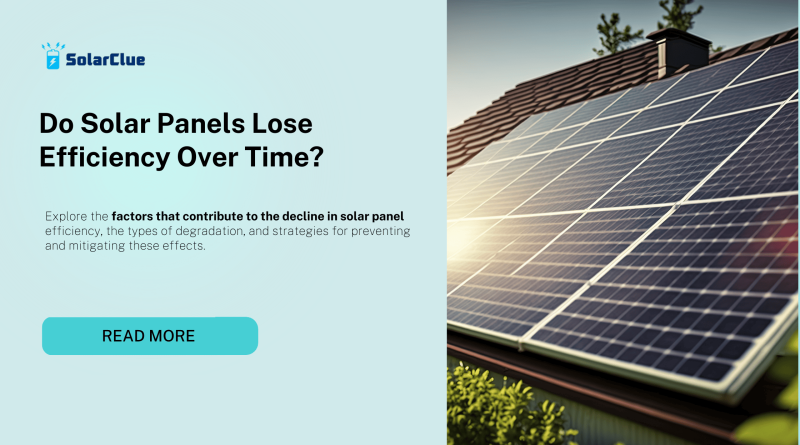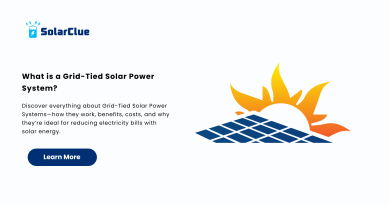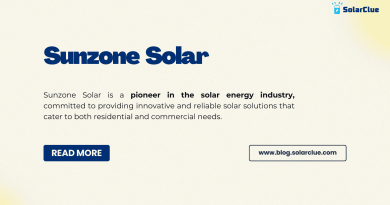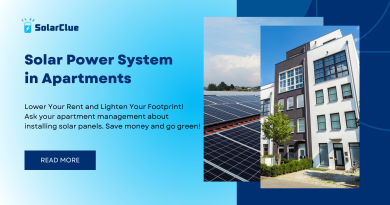Do Solar Panels Lose Efficiency Over Time?
Solar panels are designed to provide clean energy for decades, but like any technology, they degrade over time. Understanding solar panel degradation is crucial for maximizing their efficiency and lifespan. This blog will explore the factors that contribute to the decline in solar panel efficiency, the types of degradation, and strategies for preventing and mitigating these effects.
Table of Contents
- 1 The Concept of Solar Panel Degradation and Its Impact
- 1.1 Environmental Factors Affecting Solar Panel Lifespan
- 1.2 Different Types of Solar Panel Degradation
- 1.3 Types of Solar Panel Degradation and Their Effects
- 1.4 Preventing and Mitigating Solar Panel Degradation
- 1.5 The Role of Warranties and Insurance in Protecting Against Degradation
- 1.6 The Future of Solar Panel Technology and Its Impact on Degradation Rates
- 1.7 Monitoring Solar Panel Performance to Detect Early Signs of Degradation
- 1.8 The Importance of Regular Solar Panel Maintenance and Cleaning
- 1.9 Conclusion
- 1.10 FAQ Section
The Concept of Solar Panel Degradation and Its Impact
What is Solar Panel Degradation?
- Definition: Solar panel degradation refers to the gradual decline in a panel’s ability to generate electricity over time. This decline is typically measured as a percentage loss of efficiency per year.
- Impact: Over time, degradation reduces the amount of electricity a panel can produce, affecting the overall performance of the solar energy system. However, even with degradation, most panels continue to produce significant energy for many years.
Typical Degradation Rate:
- Annual Decline: On average, monocrystalline solar panels degrade at a rate of 0.5% to 1% per year. After 25 years, this could result in the panels operating at 75% to 90% of their original efficiency.
Environmental Factors Affecting Solar Panel Lifespan
Temperature:
- Heat Impact: High temperatures can accelerate the degradation of solar panels. Thermal stress from repeated heating and cooling cycles can cause micro-cracks in the cells, leading to efficiency loss.
Humidity:
- Moisture Ingress: High humidity can lead to moisture penetrating the panel’s layers, potentially causing corrosion or delamination, especially in poorly sealed panels.
UV Radiation:
- UV Exposure: Prolonged exposure to ultraviolet (UV) rays can degrade the materials used in solar panels, particularly the encapsulant and backsheet, leading to yellowing and reduced light transmission.
Different Types of Solar Panel Degradation
Potential-Induced Degradation (PID):
- Description: PID occurs when voltage potential differences between the solar cells and the grounded frame cause ion migration, leading to a significant drop in power output.
- Impact: Can cause power loss of up to 30% if not addressed.
Light-Induced Degradation (LID):
- Description: LID happens when solar cells initially exposed to sunlight experience a drop in efficiency due to the formation of boron-oxygen complexes.
- Impact: Typically results in a 1-3% efficiency drop during the first few hours of exposure.
Thermal Cycling:
- Description: Repeated expansion and contraction of materials due to temperature fluctuations can cause mechanical stress, leading to micro-cracks and solder joint failures.
- Impact: Over time, this can lead to reduced efficiency and potential hotspots.
Delamination:
- Description: Delamination occurs when the layers of the solar panel begin to separate, usually due to moisture ingress or poor manufacturing.
- Impact: Can cause significant efficiency loss and may lead to panel failure if severe.
Types of Solar Panel Degradation and Their Effects
| Type of Degradation | Description | Impact on Performance |
|---|---|---|
| Potential-Induced Degradation (PID) | Voltage differences causing ion migration within the panel | Significant power loss (up to 30%) if untreated |
| Light-Induced Degradation (LID) | Efficiency drop when panels are first exposed to sunlight | Initial 1-3% efficiency drop |
| Thermal Cycling | Material stress from repeated heating and cooling | Micro-cracks, solder joint failures, reduced efficiency over time |
| Delamination | Separation of panel layers due to moisture or poor manufacturing | Severe efficiency loss, potential panel failure |
| UV Degradation | Material degradation due to prolonged UV exposure | Yellowing, reduced light transmission, efficiency loss |
Preventing and Mitigating Solar Panel Degradation
Proper Installation:
- Quality Installation: Ensuring panels are installed correctly by certified professionals can prevent common issues like improper sealing and mounting, which contribute to degradation.
Advanced Materials:
- PID-Resistant Panels: Selecting panels designed to resist PID can prevent significant power loss.
- UV-Resistant Materials: Panels with UV-resistant encapsulants and backsheets can minimize UV degradation.
Regular Maintenance:
- Cleaning: Regularly cleaning panels to remove dirt and debris can prevent shading and reduce the risk of hotspots.
- Inspections: Routine inspections can detect early signs of degradation, allowing for timely interventions.
The Role of Warranties and Insurance in Protecting Against Degradation
Warranties:
- Performance Warranty: Most solar panels come with a 25-year performance warranty, guaranteeing that the panels will produce a certain percentage of their original output after 25 years.
- Product Warranty: Covers defects in materials and workmanship, typically for 10-12 years.
Insurance:
- Coverage: Homeowner’s insurance may cover solar panels, but specialized solar insurance can provide additional protection against weather-related damage, theft, and other risks that might lead to accelerated degradation.
The Future of Solar Panel Technology and Its Impact on Degradation Rates
Technological Advancements:
- Improved Materials: New materials and manufacturing techniques are being developed to reduce degradation rates, potentially extending the lifespan of solar panels beyond 30 years.
- Self-Healing Panels: Research into self-healing materials could lead to panels that can repair micro-cracks and other minor damages, further reducing degradation.
Monitoring Solar Panel Performance to Detect Early Signs of Degradation
Performance Tracking:
- Monitoring Systems: Using solar monitoring systems can help track the performance of your solar panels over time, allowing you to detect and address degradation early.
- Data Analysis: Regular analysis of performance data can reveal patterns indicating the onset of degradation, enabling proactive maintenance.
The Importance of Regular Solar Panel Maintenance and Cleaning
Routine Cleaning:
- Debris Removal: Keeping panels clean from dirt, leaves, and bird droppings ensures they operate at maximum efficiency and reduces the risk of hotspots.
- Safe Cleaning Practices: Use non-abrasive materials and avoid harsh chemicals that could damage the panels.
Scheduled Inspections:
- Preventive Maintenance: Regular inspections can identify potential issues before they lead to significant degradation, such as loose connections or early signs of delamination.
Conclusion
Understanding solar panel degradation is key to maintaining the efficiency and longevity of your solar energy system. By recognizing the factors that contribute to degradation and implementing strategies to prevent and mitigate these effects, you can ensure that your solar panels continue to generate clean, renewable energy for many years. This guide provides the essential knowledge to help you protect your investment and maximize the performance of your solar panels over their lifetime.
Here at SolarClue®, we offer a smart, practical, and “beautiful” solution. You will be answered for all the questions related to Solar.
We provide all kinds of brands that are the Best Solar panels in India.
If you are the one who is planning for the solar power system. Don’t hesitate to contact our team!
Looking forward to empowering you with solar energy, just like hundreds of our other clients!
FAQ Section
1. What is solar panel degradation?
Solar panel degradation refers to the gradual decline in a panel’s efficiency and power output over time, typically due to environmental factors, material fatigue, and other stresses.
2. What causes solar panels to degrade?
Common causes include UV radiation, temperature fluctuations, humidity, poor installation, and specific degradation types like PID and LID.
3. How can I prevent or mitigate solar panel degradation?
Proper installation, regular maintenance, and choosing high-quality, PID-resistant, and UV-resistant panels can help prevent or mitigate degradation.
4. What is the typical lifespan of a solar panel, and how much does it degrade annually?
The typical lifespan of a solar panel is 25 to 30 years, with an average annual degradation rate of 0.5% to 1%.
5. How does a performance warranty protect against solar panel degradation?
A performance warranty guarantees that your panels will produce a specified percentage of their original output after a certain number of years, usually 80-85% after 25 years.




